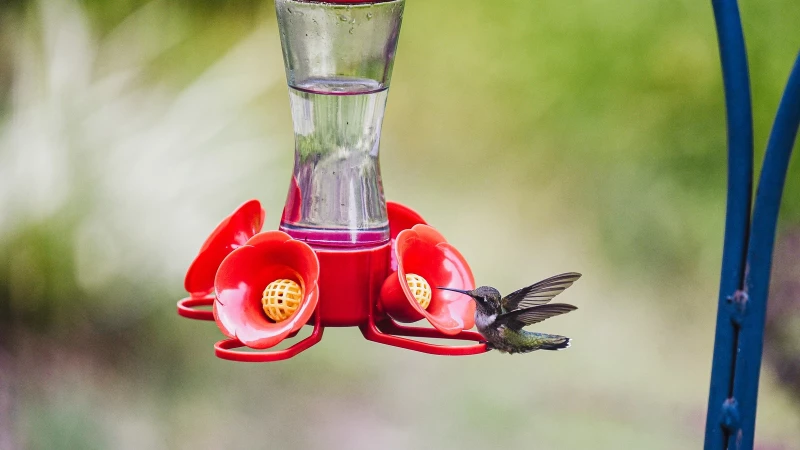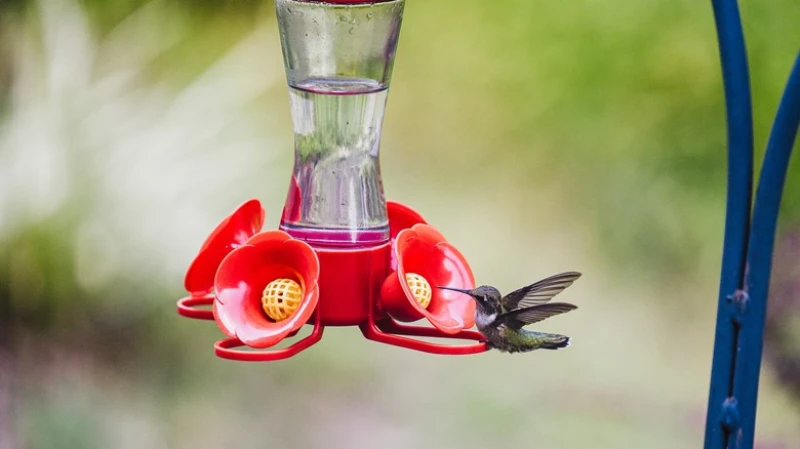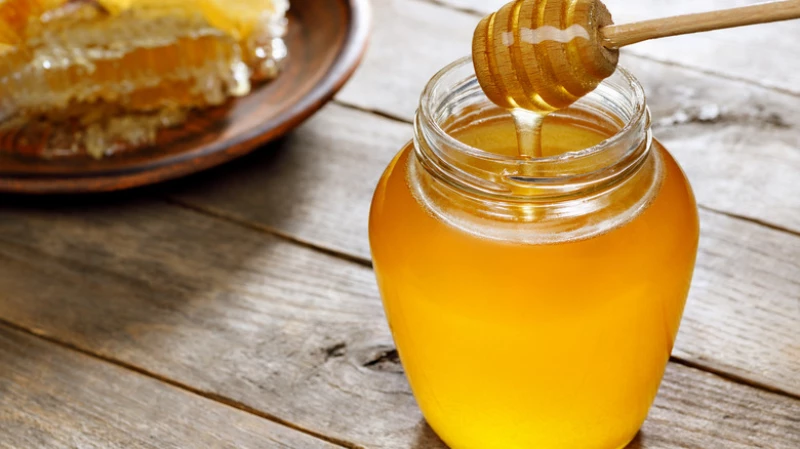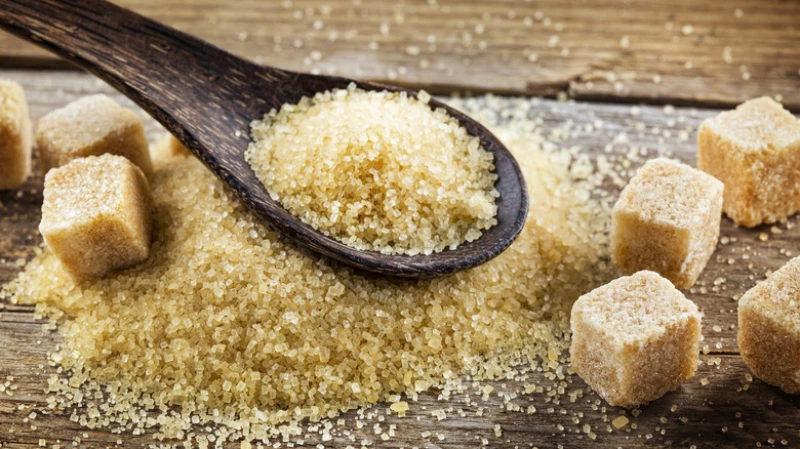Hummingbirds captivate the hearts of bird-watching enthusiasts and nature lovers with their iridescent feathers and delicate bodies. In the U.S., approximately $1 billion is spent annually on birdfeeders and accessories, including specialty feeders designed for hummingbirds. These feeders are essential as hummingbirds consume simulated nectar, a sugar water mixture tailored for their unique needs. It is crucial to avoid feeding them harmful ingredients like food coloring, fruit juices, honey, or organic sugars that can be detrimental to their health.
Tiny as they are, hummingbirds have high energy levels, constantly in motion with a rapid heartbeat. Their huge heart, constituting 2.5% of their total body mass compared to a human's 0.3%, demands that they consume about twice their body weight daily. Their diet includes live insects for protein and nectar for energy. To create a simulated nectar, a simple solution of four parts water to one part pure cane granulated sugar, fully dissolved, can be used. Making homemade hummingbird nectar is surprisingly straightforward.
Say goodbye to dye
The traditional method of using red coloring in hummingbird feeders is outdated. While it's known that hummingbirds are attracted to the color red, current recommendations advise using clear, dye-free nectar solutions in feeders with red accents at the feeding spouts. Many feeders are designed to resemble long red flowers for this purpose. An alternative is to use red-stained glass for the nectar reservoir, providing a creative way to incorporate red into your garden and attract more hummingbirds.
Although commercially produced hummingbird nectar is available in red, it often contains Red Dye 40, which may have harmful chemicals. In some European countries, products with this dye must carry a health warning label, but they are freely sold in the U.S. To safeguard the health of hummingbirds, it's best to avoid red dyes and other artificial colors in their nectar.
Boot the fruit
Given that hummingbirds partly subsist on nectar, some people may assume that the sugars from fresh fruit might be an even better, more natural option. This actually isn't the case. Organic fruits and their juices are more susceptible to fermentation. Additionally, they turn to rot and mold faster than a plain sugar water mixture would. Even something like watermelon, with an incredibly high water content, will likely spoil rapidly. Artificial juices are no better because of their dyes and potential chemical additions. Plus, these options are highly attractive to ants, which hummingbirds tend to avoid.
Other fruit options hazardous to hummingbirds are jellies, jams, and preserves. Setting out grape jelly for migrating orioles has become a popular pastime, but leaving it out year-round or putting watered-down versions into your DIY hummingbird feeders has led to these fragile creatures being found in critical condition, covered in the sticky substance. It is best to avoid such substances altogether.
Don't get fancy
There are many different types of sugar on the market these days, but basic granulated white cane sugar is the way to go when mixing up nectar for your hummingbird feeder. For strict vegans who abstain from cane sugar that may be processed with animal products, beet sugar is an acceptable substitute. Other types of sugar are harmful to hummingbirds. First, if you use artificial sweeteners at home and don't generally keep real sugar on hand, you won't provide enough caloric energy to fuel the birds' frenetic flights. Secondly, if you're out of cane sugar and think you can substitute it with confectioners' sugar, think again. Powdered sugar contains anti-caking agents, which are chemical additives that prevent dry foods from lumping together. These are not healthy for the birds.
When it comes to feeding hummingbirds, it's important to be mindful of the types of sugars you offer. Crystallized sugars like raw, organic, turbinado, and brown sugars may seem like a natural choice, but they can actually be harmful to these tiny birds. These sugars contain a higher concentration of vitamins and minerals that can overload the hummingbirds' bodies and lead to illness. This could be a possible reason why hummingbirds are avoiding your yard.
Iron out the details
Another factor to consider is the presence of molasses in brown sugar, which gives it its distinct color. Molasses is high in iron, a mineral that can be harmful to hummingbirds. These birds lack the ability to regulate iron absorption, so excess iron can accumulate in their organs, leading to iron toxicosis. It's crucial to avoid offering foods with high iron levels near hummingbird feeders.
In addition to brown sugar and molasses, other iron-rich foods like figs, raisins, prunes, maple syrup, and dark chocolate should also be kept away from hummingbirds. Even agave syrup, with its trace amounts of iron, may not be suitable. Stick to safe options and ensure proper care of your hummingbird feeder to support these birds during their migratory journey spanning thousands of miles across the continent.











